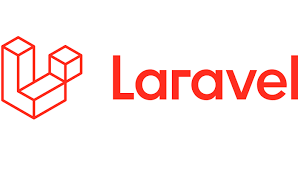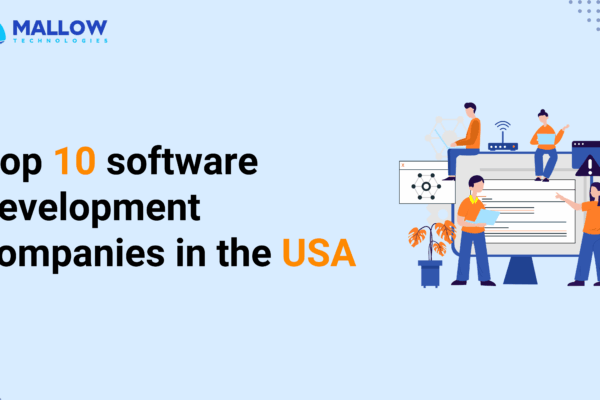As you embark on a journey into the world of PHP web development and find yourself at a crossroads choosing between PHP frameworks Laravel and Symfony, you’re likely to wonder which is the ideal companion for your next project.
In the ever-evolving web development landscape, making the right decision can be the difference between a smooth, efficient development process and a tangled web of complications.
We at Mallow, are a dedicated custom software development company, and we have a ton of experience that uniquely positions us to offer insights into the Laravel vs. Symfony dilemma. While we specialise in Laravel, we recognise that Laravel may or may not be the best choice for your project. What sets us apart is our unbiased approach in guiding clients, enabling them to make the right decision, and we have recommended prospects go with Symfony before. This commitment to putting our clients’ interests first has instilled confidence in us and keeps them returning to us for more web development projects.
In this article, we’ll provide a comprehensive exploration of both PHP frameworks. We’ll compare the two by looking at their features and the pros and cons of each option. After learning about how they compare based on things such as performance, ease of use, community support, and scalability, you’ll be. armed to make an informed decision that aligns with your specific project requirements and long-term goals.
In-depth analysis of Laravel’s feature set
Laravel, often referred to as “the PHP framework for web artisans,” is a framework that has been heavily derived from Symfony. Laravel’s creator, Taylor Otwell, incorporated several components from the Symfony framework into Laravel, leveraging the best practices and design patterns found in Symfony to create a powerful and developer-friendly platform. Laravel’s routing system and some of its core components, including the Eloquent ORM, were inspired by Symfony.

Laravel follows the Model-View-Controller (MVC) architectural pattern, providing a structured approach to application development that enhances code organisation and maintainability. Some of Laravel’s standout features include its powerful ORM, Eloquent, which simplifies database interactions, as well as the Blade templating engine, known for its simplicity and efficiency in creating dynamic views. Laravel also offers a wide range of pre-built components and packages, making it easy to add functionalities like user authentication, routing, and caching.
Key Features of Laravel
1.
Eloquent ORM (Object-Relational Mapping)
Laravel’s Eloquent ORM simplifies database interactions. It allows developers to work with databases using an elegant and expressive syntax that mirrors object-oriented programming. Eloquent models correspond to database tables, making it easy to create, retrieve, update, and delete records. Relationships between tables are also easily defined, enhancing the organisation of data and simplifying complex queries.
2.
Blade Templating Engine
Laravel’s Blade templating engine is a lightweight yet powerful tool for creating dynamic views. Its intuitive syntax makes it easy to write clean and maintainable templates. Blade templates support template inheritance, allowing developers to build a consistent layout and reusability across an application. Blade compiles templates into efficient PHP code, ensuring high performance.
3.
Artisan Console
Artisan is Laravel’s command-line tool that automates common development tasks. With Artisan, developers can generate boilerplate code, manage database migrations, and perform various other tasks, and improve the overall productivity of the development process. Custom Artisan commands can also be created to suit the specific needs of your project.
4.
Task Scheduling and Job Processing
Laravel’s task scheduling and job processing mechanisms are indispensable for managing background tasks and automating recurring jobs. The task scheduler allows developers to define and schedule tasks that should run at specific intervals, such as sending emails, clearing caches, or performing maintenance.
5.
Dependency Injection and Service Container
Laravel leverages a robust service container for managing class dependencies. This feature promotes the use of dependency injection and inversion of control, making code more modular, testable, and maintainable. The service container allows for the binding of classes to interfaces, enabling seamless switching between implementations.
6.
Community and Documentation
Laravel boasts an active and vibrant community of developers. Extensive documentation, tutorials, forums, and packages are readily available, making it easy to find solutions to challenges and learn the best practices. The community actively contributes to the framework’s development, ensuring that Laravel remains current and evolves to meet the ever-changing demands of web development. With 75k stars and 24k forks in Github, and 208,778 questions in stack overflow, Laravel continues to be one of the most popular frameworks of PHP.
Pros and cons of Laravel

Pros
- Blade templating – Blade templating simplifies the creation of dynamic and maintainable user interfaces. For businesses, this means faster development, which translates to cost savings and quicker time-to-market.
- Authentication and Authorisation – Laravel includes pre-built packages for user authentication, simplifying the development of user registration, login, and password reset functionality. Laravel provides a user authentication system that is easy to implement and offers a secure login mechanism for your web application.
- Security – Laravel’s built-in security features include robust protection against common web vulnerabilities like Cross-Site Scripting (XSS), Cross-Site Request Forgery (CSRF), SQL injection, and more. These security measures help safeguard your application and user data from potential threats, ensuring a safer and more reliable web application.
- Scalable API Development – Laravel provides a structured and efficient way to build APIs, making it easier for developers to create and maintain scalable web services. Which means the development time of your application will be reduced to a greater extent. Laravel supports popular API standards and authentication mechanisms, ensuring that your APIs are secure, interoperable, and in compliance with industry best practices.
- Improved Application Performance – Laravel Octane offers several benefits to Laravel applications, including significantly improved performance by allowing them to handle a higher number of concurrent requests with reduced memory consumption. Octane can lead to faster response times and lower server resource usage, making it ideal for high-traffic web applications.
- Out of the box packages – Laravel offers a range of out of the box packages, such as Passport, Sanctum, Breeze, and Cashier, which play a pivotal role in simplifying common development tasks. These packages are meticulously crafted to streamline the implementation of essential features like Passport for simplifying API authentication through OAuth2, Sanctum for API authentication (particularly well-suited for single-page applications (SPAs) and mobile app development), Breeze for setting up authentication and registration features in an application, cashier to to simplify subscription billing and management in web applications etc.
- Community and documentation – Laravel benefits from a vibrant and expansive community of developers and comprehensive documentation. This community actively contributes to the framework’s growth and offers invaluable support and resources for developers. This strong Laravel community and well-documented ecosystem can significantly benefit your business by providing readily available expertise, support, and resources, ultimately speeding up development, reducing costs, and ensuring the reliability and success of your web projects.
Cons
- Configurability complexity – Customising Laravel can lead to complexity in managing large and intricate applications. When compared with Symfony, customisation restrictions might get on the higher side.
- Frequent updates – Laravel’s annual major version releases, while indicative of its active development, can pose challenges for large-scale applications. Updating these applications to newer versions may require substantial effort and thorough testing to maintain compatibility, potentially causing disruption or delays in ongoing development projects.
Use Cases for Laravel
Laravel is a popular PHP framework renowned for its elegant syntax, developer-friendly tools, and robust ecosystem. It is ideal for applications requiring rapid development and a seamless user experience. Its built-in features like Eloquent ORM, Blade templating engine, and Laravel Queue, authentication empower developers to build scalable and secure web applications. The framework is often chosen for projects ranging from startups to enterprise-level solutions, making it a strong contender in the Laravel vs Symfony debate.
Applications built with Laravel:
- Invoice Ninja
- Laravel Nova
- Union
- Neighborhood Lender
- Alison
In-depth analysis of Symfony’s feature set
Symfony is a robust and highly regarded PHP web application framework that has earned a prominent place in web development. Known for its elegance and flexibility, Symfony offers a comprehensive ecosystem of tools, components, and best practices to streamline the process of creating complex, high-performance web applications.

At its core, Symfony follows the model-view-controller (MVC) architectural pattern, providing a structured and scalable framework for developers to work with. Symfony’s emphasis on reusability and modularity is a standout feature, allowing developers to leverage a wealth of pre-built components and bundles, saving time and effort.
Key features of Symfony
1.
Flexibility and Modularity
- Symfony’s flexibility and modularity are at the core of its design philosophy. With Symfony application development, you have the freedom to cherry-pick the components you need for a project, allowing for lean and efficient development. This modular approach reduces bloat, making Symfony exceptionally adaptable to varying project requirements. Developers can seamlessly integrate components such as routing, security, and form handling, enhancing both productivity and maintainability.
2.
Templating Engine
- Symfony’s use of the Twig templating engine is a standout feature, as it streamlines the creation of dynamic and maintainable templates. Twig’s elegant and intuitive syntax allows developers to write clean and readable code, reducing the chances of errors and enhancing collaboration. The engine’s strict separation of logic and presentation ensures that the application’s front end remains separate from the back end, simplifying template management and updates. Twig also provides powerful features like template inheritance and block overriding, essential for creating a consistent and extensible design throughout a project.
3.
ORM (Object-Relational Mapping)
- Symfony seamlessly integrates with the Doctrine ORM, enabling developers to work with databases in an object-oriented manner. This simplifies database interactions by allowing developers to use entities and relationships as objects rather than writing complex SQL queries. The ORM handles data mapping, persistence, and querying tasks, thereby streamlining database-related operations. It also offers features like lazy loading and automatic schema generation, which can significantly reduce development time and increase the maintainability of database-driven applications.
4.
Community and documentation
- Symfony boasts a vibrant and extensive community, supported by a wealth of documentation and resources. The community actively contributes to the framework’s development, making Symfony continually evolve and stay up-to-date with best practices. The extensive documentation is valuable for newcomers and experienced developers, offering in-depth guides, tutorials, and real-world examples. The strong community backing ensures developers can readily find solutions to their challenges through forums, social media groups, or special occasions like Symfony conferences. This rich support ecosystem is pivotal in the framework’s success and its continued relevance in the web development landscape. Boasting an impressive presence with 73,649 questions in Stack overflow, 28.8k stars, and 9.3k forks, on GitHub, Symfony remains a top contender among PHP frameworks.
5.
EventDispatcher
- The EventDispatcher component allows you to create an event-driven architecture in your application. This means that different parts of your application can communicate without having direct dependencies on each other. This decoupling makes your code more modular and maintainable. By using events and listeners, you can easily extend or modify the behaviour of your application without altering its core code. This flexibility simplifies the process of adding new features or changing existing ones. Events and listeners are reusable components.
You can use the same event and listener in multiple parts of your application, reducing code duplication and promoting consistency. Events and listeners help organise your application logic. You can group related functionality together in specific event classes and their corresponding listeners, which enhances code readability and maintainability.
Pros and cons of Symfony

Pros
- Performance – Symfony excels in delivering high-performing applications, thanks to its well-optimised architecture and powerful tools.
- Modular and Flexible Architecture – Symfony’s modular design enables developers to select and integrate components based on project requirements, reducing unnecessary bloat and enhancing efficiency.
- Strict Adherence to Best Practices – Symfony promotes clean, organised, and maintainable code by enforcing coding standards and design patterns.
- Extensive Documentation – Symfony provides comprehensive documentation, making it an excellent choice for developers seeking a resourceful framework to navigate and understand its features.
- Rich Ecosystem of Reusable Components – Symfony offers a wide range of reusable components, simplifying development and saving time by providing pre-built solutions for common tasks.
- Long-Term Stability – Symfony’s commitment to backward compatibility and long-term support makes it a reliable choice for both small and large-scale projects.
- Scalability – Symfony is well-equipped to handle the development of scalable applications, from small projects to enterprise-level solutions.
- Security – Symfony provides built-in security features and practices, helping developers create secure web applications.
Cons
- Time-Intensive Initial Setup – Setting up a Symfony project may take more time compared to simpler and more lightweight frameworks.
- Potential Complexity for Large Applications – The configurability of Symfony can lead to complexity when managing large and intricate applications, requiring careful planning and organisation.
- Overkill for Small Projects – For small and straightforward projects, Symfony’s feature-rich environment may appear excessive, and a more lightweight framework might be a more suitable choice.
Use cases of Symphony
Symfony is a powerhouse framework known for its flexibility, scalability, and component-based architecture. It is the go-to choice for large-scale, enterprise-grade applications that require complex functionalities and high performance. Symfony’s reusable components and adherence to PHP standards make it a preferred framework for long-term, maintainable projects. This reliability has made it a key competitor in the Laravel vs Symfony comparison.
Applications built with Symfony:
- Trivago
- Spotify
- Drupal
- Magento 2
- National Geographic
Symfony vs. Laravel – Which Reigns Supreme?
Both Laravel and Symfony have their strengths, making it challenging to declare one as the undisputed victor. Laravel excels in rapid development and boasts a rich set of built-in features, making it the go-to choice for many web developers. On the other hand, Symfony offers unmatched flexibility and scalability, making it a formidable choice for complex enterprise applications. The choice between Laravel and Symfony ultimately depends on the specific needs of your project, your development team’s expertise, and your preferences.
Here’s a comparison table between Laravel and Symfony based on the specified criteria:
| Criteria | Laravel | Symfony | Winner |
| Time to Market | Laravel is known for its rapid development capabilities due to its elegant syntax and built-in features like Eloquent ORM and Blade templating. This can significantly reduce development time. | Symfony is a bit more time-consuming to set up and configure, but it provides a high degree of flexibility and control. The Symfony Flex tool can help streamline project setup. | Laravel |
| Actively in Development | Laravel has a robust community and is actively maintained. New features and updates are regularly released. | Symfony is a mature framework with a dedicated development team and a strong community. It is actively maintained, and updates are released regularly. | Tie |
| Availability of Developers | Laravel developers are widely available due to its popularity. There is a large talent pool, making it easier to find skilled developers. | Symfony also has a substantial community, so developers are available, but it might be a bit less abundant than Laravel due to its complexity. | Laravel |
| Built-in Features | Laravel offers a rich set of built-in features like Eloquent ORM, Blade templating, and authentication, and a variety of artisan commands. This simplifies common tasks. | Symfony is a component-based framework and provides reusable components for various purposes, but it offers fewer built-in features than Laravel. You can add components as needed. | Laravel |
| Flexibility | Laravel is opinionated and follows a convention-over-configuration approach, which makes it less flexible in some cases but speeds up development. | Symfony is highly flexible and follows a configuration-over-convention approach, providing more control over the project structure and components used. | Symfony |
| Performance | Laravel is designed for ease of use, which can sometimes impact performance. However, it’s still fast for most applications. | Symfony is known for its performance and scalability, particularly for complex enterprise applications. | Symfony |
| Built-in Security Features | Laravel includes security features like CSRF protection, authentication, and authorisation out of the box. | Symfony also provides security components for handling authentication, authorisation, and other security-related concerns. | Tie |
| API Support | Laravel has built-in support for building RESTful APIs. | Symfony is well-suited for building APIs and comes with components like API Platform for API development. | Tie |
Please note that the “Winner” column is based on a general comparison, and it’s important to note that the choice between Laravel and Symfony should ultimately depend on the specific needs and context of your project. Both frameworks have their strengths and may be the better choice for different scenarios.
What are some other common PHP frameworks out there?
By now, you likely have a good understanding of the differences in developing a PHP application using two specific frameworks, namely Laravel and Symfony, among the numerous popular options such as CakePHP, Phalcon, Yii, and others. You’ve gained valuable insights into making an informed decision on which of these two frameworks would best suit your project’s specific needs. As your next step, you might be contemplating the process of creating your application with either of these frameworks.
If you’re interested in delving deeper into what the journey of building your application with Laravel would entail, check out the article titled with how to construct a new application using the Laravel framework, for further insights.
Still unsure about your next move? Feel free to get in touch with our team.
Your queries, our answers
Yes, we can continue developing your existing Laravel application. Please provide the current project details so we can assess and proceed. For more details, get in touch with our team.
No, we focus on custom Laravel solutions tailored specifically to your needs. We do not offer pre-built, off-the-shelf products.
Yes, we develop Laravel applications for various domains, including e-commerce, healthcare, finance, and more.
The cost varies based on the project's complexity and scope. For a basic MVP, costs generally range from $20,000 to $40,000 for web apps and $10,000 to $25,000 for mobile apps. For more advanced applications, costs can be higher. We offer a detailed cost breakdown tailored to your specific needs. To know more, check out our article on How much does it cost to work on a Laravel project with Mallow? and discover how we can build a strong partnership together.
The timeline depends on the project's complexity. A basic project may take a few weeks, while more complex applications could take several months.
Yes, we can align our working hours with your time zone to facilitate effective communication throughout the development process. For more details on how you can handle timezone differences efficiently, do check out our article on how to handle timezone differences while working with an offshore development team.
Mallow offers the following outsourcing models: Project-based outsourcing, Staff augmentation, & Dedicated development team (DDT)
Yes, we offer maintenance and support services to ensure your Laravel application remains up-to-date and functional.
Yes, you will own the intellectual property rights of your Laravel application upon project completion. Check out our article on why owning intellectual property rights while outsourcing your application is important.
The cost is influenced by several factors including the complexity of the project, the number of features required, and whether the application is for web or mobile. We provide a personalized estimate based on your project details.
We work with the latest stable versions of Laravel and can also support older versions if needed based on your project requirements. For more details check out our article on Laravel upgrade: when and how to transition to the latest version
Yes, we offer post-deployment support to address any issues and provide updates as needed.
To hire a Laravel developer from Mallow, you can contact us with your project requirements. We'll discuss your needs, suggest suitable developers or teams, and provide you with a proposal. Once the terms are agreed upon, we can start the development process.
Yes, you can hire a dedicated Laravel developer or a team of developers from Mallow. This allows you to have a dedicated resource working exclusively on your project, providing more control and flexibility over the development process.
To hire the right laravel developer for your project, check out this article on tips to hire the right Laravel developer.
Author
Anandhan
Anandhan is a passionate technical lead at Mallow, where he plays a crucial role in driving innovation and overseeing the development of cutting-edge solutions. With a wealth of experience in the field of technology, he consistently strives to elevate his team's performance and deliver exceptional results. His multifaceted interests inspire him to approach challenges with creativity and an open mind, leading to innovative solutions that transcend conventional boundaries. Beyond his professional endeavours, Anandhan nurtures a love for literature and cinema. During his free time, you'll often find him engrossed in the pages of books across various genres, exploring diverse narratives and gaining insights from authors around the world.



